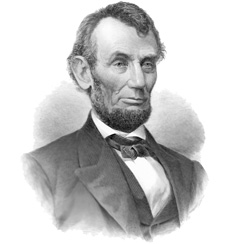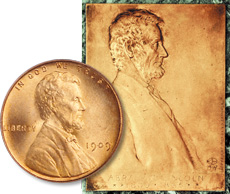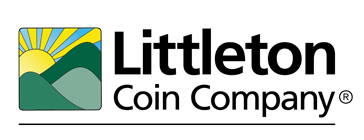Lincoln Head Cents Collection
The Lincoln Head Cent Design

The Lincoln cent was the first regular-issue U.S. coin to depict an actual person, and not an allegorical figure.
The Lincoln cent was the first regular-issue U.S. coin to depict an actual person, and not an allegorical figure. For more than a hundred years, the U.S. Mint had exclusively used female figures representing Liberty on circulating coins. The tradition went back to George Washington's wish not to have his portrait on regular coins – Washington felt strongly that it was too much like the practice of European monarchies, and that the use of allegorical figures was more appropriate for a democracy. However, by the time of the 1909 centennial of Abraham Lincoln's birth, the idea of honoring an actual person was accepted and had gained enthusiasm. The new Lincoln Head cent design paved the way for the U.S. coinage that would follow later on in the century, with circulating coins dedicated to great leaders of the United States.
The Lincoln Cent and the Wheat Ears Reverse
Victor David Brenner, designer of the first Lincoln Head cent, was born Victoras Barnauskas on June 12, 1871 in Shavli, Lithuania. His family had been engravers and seal cutters for generations, and at age 10, he began to learn the trade from his father. At age 16, he left home to be a jeweler's apprentice, and at 18, he landed his first engraving job. His talent made him the target of jealous co-workers, who set him up on a counterfeiting charge that got him banished to Siberia – a conviction largely based on Brenner's Jewish ancestry.

Victor David Brenner adapted the portrait for the cent's obverse from his Lincoln plaque and medal.
Before the sentence could be carried out, Victoras fled to America with his brother and sister. He arrived in New York City in 1890, and worked as a die-cutter in a factory while studying art and design at night. He applied for citizenship under the name Victor David Brenner. In 1894, Brenner opened a small workshop and produced medals and plaques to finance further study of medallic art in Paris. He returned from France in 1906 as a highly acclaimed medalist with more than 70 medals and plaquettes, and a successful international exhibition, to his credit.
In 1908, he was asked to create a Panama Canal service medal portraying President Theodore Roosevelt. When Roosevelt posed for the medal, Brenner suggested to him the idea of honoring Abraham Lincoln with a coin. Roosevelt was impressed by a Lincoln centennial plaque Brenner was already working on, and told Brenner to go ahead and design a Lincoln coin. Brenner adapted the portrait for the cent's obverse from his Lincoln plaque and medal. For the reverse, he chose a simple, yet bold inscription of ONE CENT, framed by two stylized ears of wheat.
Read more about Victor David Brenner and the scandal of his initials.

Wheat Ears reverse (1909-1958)

Memorial reverse (1959-2008)
The Lincoln Memorial Reverse
In 1959, the cent's reverse was redesigned for the 150th anniversary of Lincoln's birth (and the 50th anniversary of the Lincoln cent). A competition was held amongst the employees at the U.S. Mint in Philadelphia and Frank Gasparro, then an assistant engraver, submitted the winning design featuring the Lincoln Memorial. Also to his credit are designs for the Eisenhower dollar, the Anthony dollar, the Kennedy half dollar reverse, and collaboration on Bicentennial coinage.
Frank Gasparro's cent reverse depicts the Lincoln Memorial in remarkable detail. On a well-struck coin without excessive wear, the huge statue of Lincoln is visible between the columns. Adding the memorial with its statue to the cent, created the only multi-year, regular-issue U.S. coin to feature the same individual on both the obverse and reverse.
Bicentennial Designs and Beyond
In 2009, to celebrate both the bicentennial of Lincoln's birth, and 100 years of the Lincoln cent, the U.S. Mint issued four new reverse designs representing four major areas of the 16th president's life...
Birthplace – To honor Lincoln's birth and childhood in Kentucky. This design depicts a log cabin, representing his place of birth in 1809. This first design was released on February 12, 2009 – the 200th anniversary of Lincoln's birth.
Formative Years – At the age of 7, Abraham moved with his family to southern Indiana. There he learned how to work the land, becoming especially adept with using a plow and an axe. During this time, his love of books and reading continued. This second cent design depicts a youthful Lincoln taking a break from rail splitting to read and learn.
Professional Life – Lincoln as a lawyer and representative stands before the Illinois capitol building. In 1830, the Lincolns moved to Illinois. Here, Abraham formed a career in law and politics, earning him a nomination for the state senate in 1858. Though he was not elected to the seat, the election sparked the famed Lincoln-Douglas debates, which catapulted him into a nomination for the presidency.
Presidency – Depicts a partially-completed U.S. Capitol dome, which was built during the Civil War. This design is also symbolic of a nation divided during Lincoln's presidency. When he took the oath of office for the first time in 1861, America was on the brink of civil war. Just five days before his assassination in 1865, Robert E. Lee surrendered to Ulysses S. Grant – marking the war's end, and achieving Lincoln's goal of uniting America once again.




Bicentennial reverses: Birthplace, Formative Years, Professional Life, Presidency (2009)

Shield reverse (2010‑date)
In 2010, the Shield Reverse was introduced to replace the Bicentennial program. The new reverse features a union shield, which dates back to the 1780s, features 13 vertical stripes for the original states, and is seen widely on frescoes throughout the U.S. Capitol. The shield was widely used during the Civil War era, with its inscription e pluribus unum ("out of many, one") signifying unity. For the new coin design, a horizontal scroll bears the denomination one cent.
Littleton Coin has a wide inventory of Lincoln Head cents, from 1909 to the present. To view all of these coins, see our Lincoln Cents category.
The Lincoln Head Cent Design

The Lincoln cent was the first regular-issue U.S. coin to depict an actual person, and not an allegorical figure.
The Lincoln cent was the first regular-issue U.S. coin to depict an actual person, and not an allegorical figure. For more than a hundred years, the U.S. Mint had exclusively used female figures representing Liberty on circulating coins. The tradition went back to George Washington's wish not to have his portrait on regular coins – Washington felt strongly that it was too much like the practice of European monarchies, and that the use of allegorical figures was more appropriate for a democracy. However, by the time of the 1909 centennial of Abraham Lincoln's birth, the idea of honoring an actual person was accepted and had gained enthusiasm. The new Lincoln Head cent design paved the way for the U.S. coinage that would follow later on in the century, with circulating coins dedicated to great leaders of the United States.
The Lincoln Cent and the Wheat Ears Reverse
Victor David Brenner, designer of the first Lincoln Head cent, was born Victoras Barnauskas on June 12, 1871 in Shavli, Lithuania. His family had been engravers and seal cutters for generations, and at age 10, he began to learn the trade from his father. At age 16, he left home to be a jeweler's apprentice, and at 18, he landed his first engraving job. His talent made him the target of jealous co-workers, who set him up on a counterfeiting charge that got him banished to Siberia – a conviction largely based on Brenner's Jewish ancestry.

Victor David Brenner adapted the portrait for the cent's obverse from his Lincoln plaque and medal.

The Lincoln cent was the first regular-issue U.S. coin to depict an actual person, and not an allegorical figure.
The Lincoln cent was the first regular-issue U.S. coin to depict an actual person, and not an allegorical figure. For more than a hundred years, the U.S. Mint had exclusively used female figures representing Liberty on circulating coins. The tradition went back to George Washington's wish not to have his portrait on regular coins – Washington felt strongly that it was too much like the practice of European monarchies, and that the use of allegorical figures was more appropriate for a democracy. However, by the time of the 1909 centennial of Abraham Lincoln's birth, the idea of honoring an actual person was accepted and had gained enthusiasm. The new Lincoln Head cent design paved the way for the U.S. coinage that would follow later on in the century, with circulating coins dedicated to great leaders of the United States.
The Lincoln Cent and the Wheat Ears Reverse
Victor David Brenner, designer of the first Lincoln Head cent, was born Victoras Barnauskas on June 12, 1871 in Shavli, Lithuania. His family had been engravers and seal cutters for generations, and at age 10, he began to learn the trade from his father. At age 16, he left home to be a jeweler's apprentice, and at 18, he landed his first engraving job. His talent made him the target of jealous co-workers, who set him up on a counterfeiting charge that got him banished to Siberia – a conviction largely based on Brenner's Jewish ancestry.

Victor David Brenner adapted the portrait for the cent's obverse from his Lincoln plaque and medal.
Before the sentence could be carried out, Victoras fled to America with his brother and sister. He arrived in New York City in 1890, and worked as a die-cutter in a factory while studying art and design at night. He applied for citizenship under the name Victor David Brenner. In 1894, Brenner opened a small workshop and produced medals and plaques to finance further study of medallic art in Paris. He returned from France in 1906 as a highly acclaimed medalist with more than 70 medals and plaquettes, and a successful international exhibition, to his credit.
In 1908, he was asked to create a Panama Canal service medal portraying President Theodore Roosevelt. When Roosevelt posed for the medal, Brenner suggested to him the idea of honoring Abraham Lincoln with a coin. Roosevelt was impressed by a Lincoln centennial plaque Brenner was already working on, and told Brenner to go ahead and design a Lincoln coin. Brenner adapted the portrait for the cent's obverse from his Lincoln plaque and medal. For the reverse, he chose a simple, yet bold inscription of ONE CENT, framed by two stylized ears of wheat.
Read more about Victor David Brenner and the scandal of his initials.

Wheat Ears reverse (1909-1958)

Memorial reverse (1959-2008)
The Lincoln Memorial Reverse
In 1959, the cent's reverse was redesigned for the 150th anniversary of Lincoln's birth (and the 50th anniversary of the Lincoln cent). A competition was held amongst the employees at the U.S. Mint in Philadelphia and Frank Gasparro, then an assistant engraver, submitted the winning design featuring the Lincoln Memorial. Also to his credit are designs for the Eisenhower dollar, the Anthony dollar, the Kennedy half dollar reverse, and collaboration on Bicentennial coinage.
Frank Gasparro's cent reverse depicts the Lincoln Memorial in remarkable detail. On a well-struck coin without excessive wear, the huge statue of Lincoln is visible between the columns. Adding the memorial with its statue to the cent, created the only multi-year, regular-issue U.S. coin to feature the same individual on both the obverse and reverse.
Bicentennial Designs and Beyond
In 2009, to celebrate both the bicentennial of Lincoln's birth, and 100 years of the Lincoln cent, the U.S. Mint issued four new reverse designs representing four major areas of the 16th president's life...
Birthplace – To honor Lincoln's birth and childhood in Kentucky. This design depicts a log cabin, representing his place of birth in 1809. This first design was released on February 12, 2009 – the 200th anniversary of Lincoln's birth.
Formative Years – At the age of 7, Abraham moved with his family to southern Indiana. There he learned how to work the land, becoming especially adept with using a plow and an axe. During this time, his love of books and reading continued. This second cent design depicts a youthful Lincoln taking a break from rail splitting to read and learn.
Professional Life – Lincoln as a lawyer and representative stands before the Illinois capitol building. In 1830, the Lincolns moved to Illinois. Here, Abraham formed a career in law and politics, earning him a nomination for the state senate in 1858. Though he was not elected to the seat, the election sparked the famed Lincoln-Douglas debates, which catapulted him into a nomination for the presidency.
Presidency – Depicts a partially-completed U.S. Capitol dome, which was built during the Civil War. This design is also symbolic of a nation divided during Lincoln's presidency. When he took the oath of office for the first time in 1861, America was on the brink of civil war. Just five days before his assassination in 1865, Robert E. Lee surrendered to Ulysses S. Grant – marking the war's end, and achieving Lincoln's goal of uniting America once again.




Bicentennial reverses: Birthplace, Formative Years, Professional Life, Presidency (2009)

Shield reverse (2010‑date)
In 2010, the Shield Reverse was introduced to replace the Bicentennial program. The new reverse features a union shield, which dates back to the 1780s, features 13 vertical stripes for the original states, and is seen widely on frescoes throughout the U.S. Capitol. The shield was widely used during the Civil War era, with its inscription e pluribus unum ("out of many, one") signifying unity. For the new coin design, a horizontal scroll bears the denomination one cent.
Littleton Coin has a wide inventory of Lincoln Head cents, from 1909 to the present. To view all of these coins, see our Lincoln Cents category.

